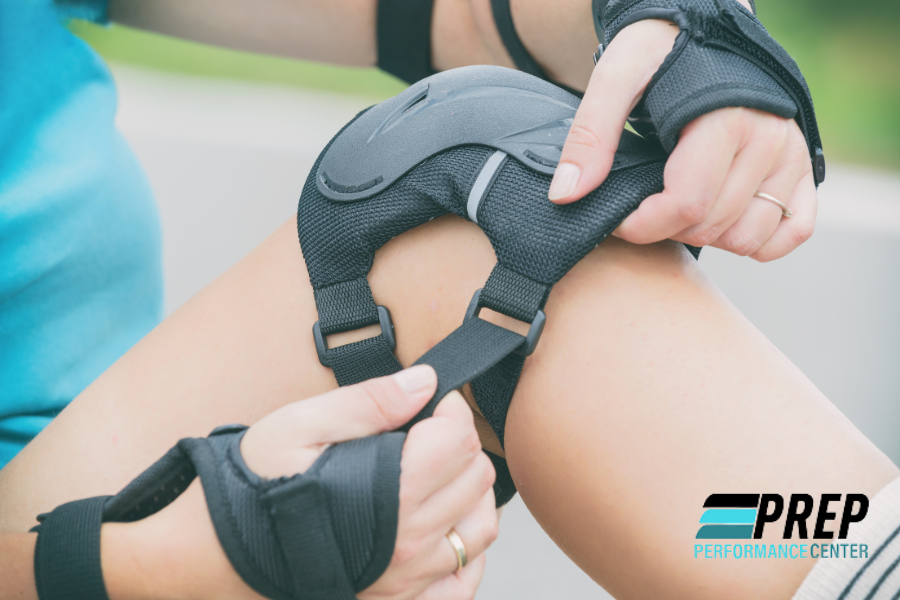So you might be wondering when you can Return to Play after an ACL injury. It is very important that you (recovering athlete) understand the risk factors when you go and take the field again. As you finish your rehab and feel ready to play your sport again, it is very important that you understand that you not only need to be physically prepared to get on the field again, but mentally prepared. In order to assess your mental readiness we recommend our athletes complete a mental assessment in which they take multiple quizzes that identify their confidence in their body and confidence and fears in returning to play. By assessing the athletes mental and emotional status, we can understand if they are fearful of injuring their knee again or if they are confident and ready to return.
Below you will see some of the statistics that are stacked against us as ACL injured athletes. These statistics are not here to scare you but they are here to shed light on the reality and why it’s important to measure your Readiness to Return to Play and the importance of progressively returning you to play safely. This not only focuses on getting your body stronger, but incorporates game-like drills and skills that progressively challenge you in a variety of ways you encounter on the field.
If you follow along you’ll see more of my Controlled Chaos Theory which is a progressive return to sport protocol in which we include variables of athletic competition. We alter the frequency, intensity, and duration for a gradual and safe Return to Sport.
Controlled Non-contact Drills
This begins with Controlled Non-contact Drills followed by Controlled Non-Contact Play. By controlling the environment, the athlete is safe to explore new movements and feels safe in adding more dynamic and athletic movements in an on field, “game like” setting. We limit the contact the athlete experiences (0% defense) and let them dictate the drill so they can focus on confidence and planning their moves. Secondly, we progress to Controlled Contact Drills followed by Controlled Contact Play. We control the defense (0%-50% defence) and ensure safe play between the recovering athlete and their teammate. The recovering athlete should have a Red Pinnie on, to identify them on the field and in the midst of the drills. This aspect of the protocol allows the recovering athlete to encounter contact, however is still focusing on motor planning, stability, and dual task.
*All members of the team need to be aware of the Controlled Chaos Continuum and the coach needs to properly monitor athletes during these drills to ensure they adhere to the limitations when playing against the recovering athlete.
Uncontrolled Contact Drills
Last but not least, we progress into Uncontrolled Contact Drills (progressing frequency (play vs rest), length of field play, and total duration) followed by Uncontrolled Contact Play (progressing play vs rest), length of field play and total duration). We have no limitations on either the recovering athlete or their teammate as both are playing at 100% intensity. We are limiting reps of play to allow for adequate rest time, the length of field play to half field and progressing to full field, and last but not least the total time an athlete is playing. This setting still provides a safe space for the athlete to practice skills such as pre-planning movements, dual task, and reactive responses to contact, however this final stage of ACL rehab protocol addresses the fatigue factor and ensures the athlete is fully prepared for game play without limitations to frequency, intensity or duration on the field.
In my eyes, an athlete shouldn’t be on the field during a competition if they haven’t passed the Uncontrolled Chaos Continuum and are 100% confident they are back to the athlete they once were.
Statistics
The stats are stacked against us; so surgeons, physical therapists, athletic trainers, coaches, parents and athletes need to do a better job of preparing our athletes for full game competition which means our training and rehabilitation needs to increase in intensity and duration to ensure these statistics start to make a turn for the better.
- Meniscal injuries are found on nearly 75% of all ACL patients
- Only 14% of high school aged athletes after ACL-R surgery meet the strength, limb symmetry, and subjective criteria to return to play.
- Re-tear rates in athletes who failed RTP criteria were 40% as compared to only 5% with those who passed
- Nearly all patients will have knee OA 15-20 years after injury
- For every 1 month delay after 9 months in Return To Play, knee injury was reduced by 51% s/p ACL-R surgery in pivoting sports
- 25% of athletes tear their ACL on the opposite leg within the 1st year of RTP
- Bone Bruises are evident on 80-90% of all patients
- Up to 80% of patients failed to meet return to sport criteria despite being cleared to return to play
- Even though 82% of all patients were able to resume sports activity, only 63% returned to their pre-injury level of participation and 44% returned to competitive sports.
Click here for more information on the Controlled Chaos Continuum. We provide you with examples and downloadables to help you and your athletes progress through the Controlled Chaos Continuum.


